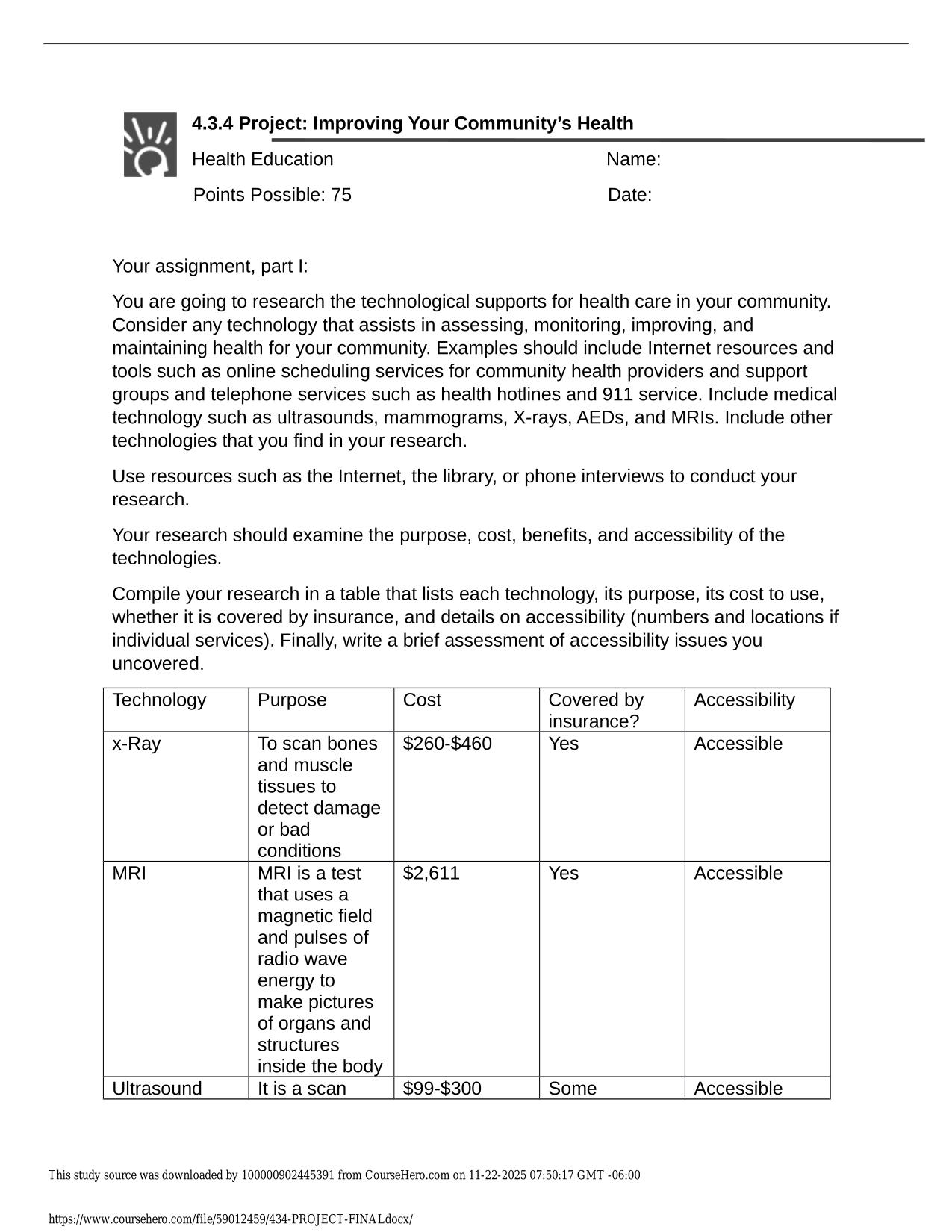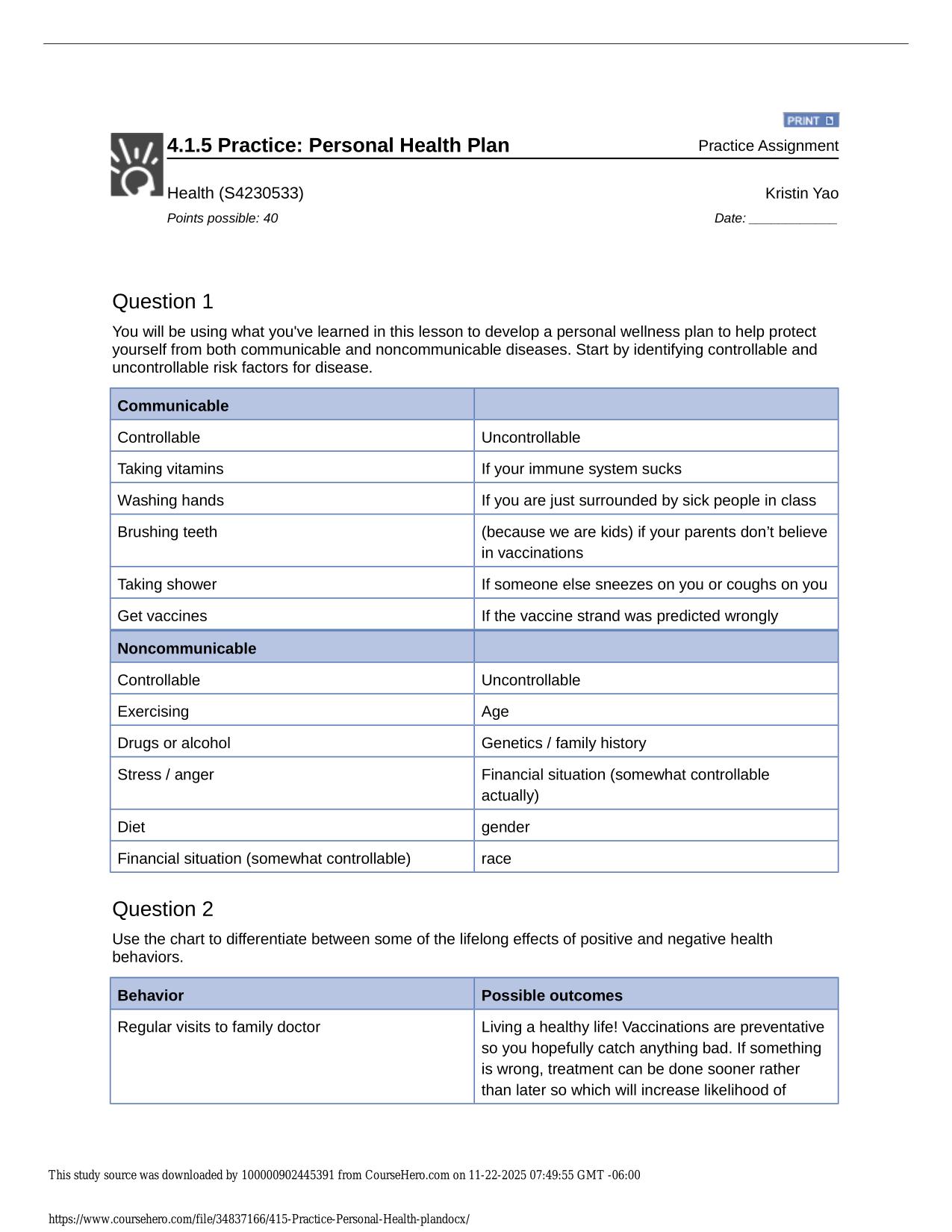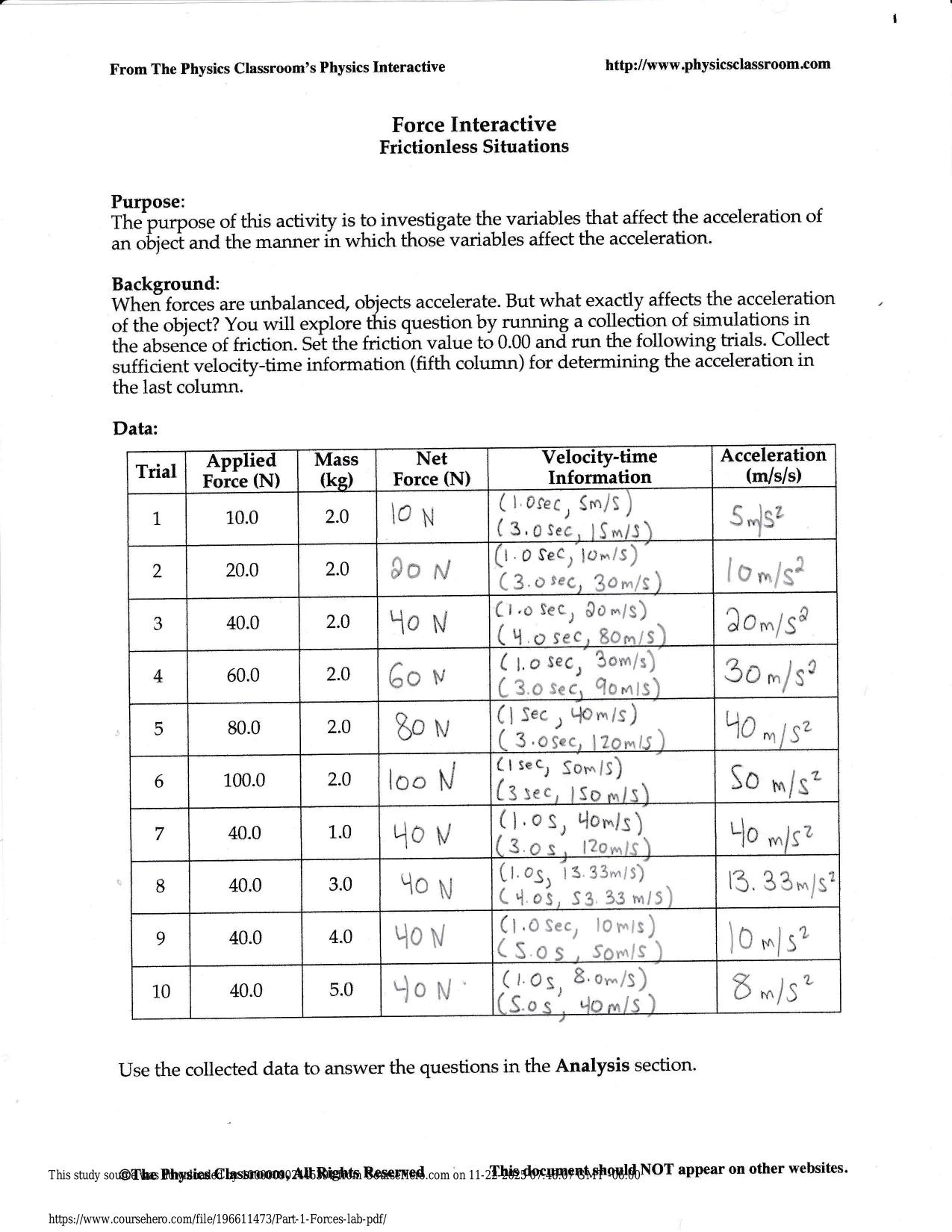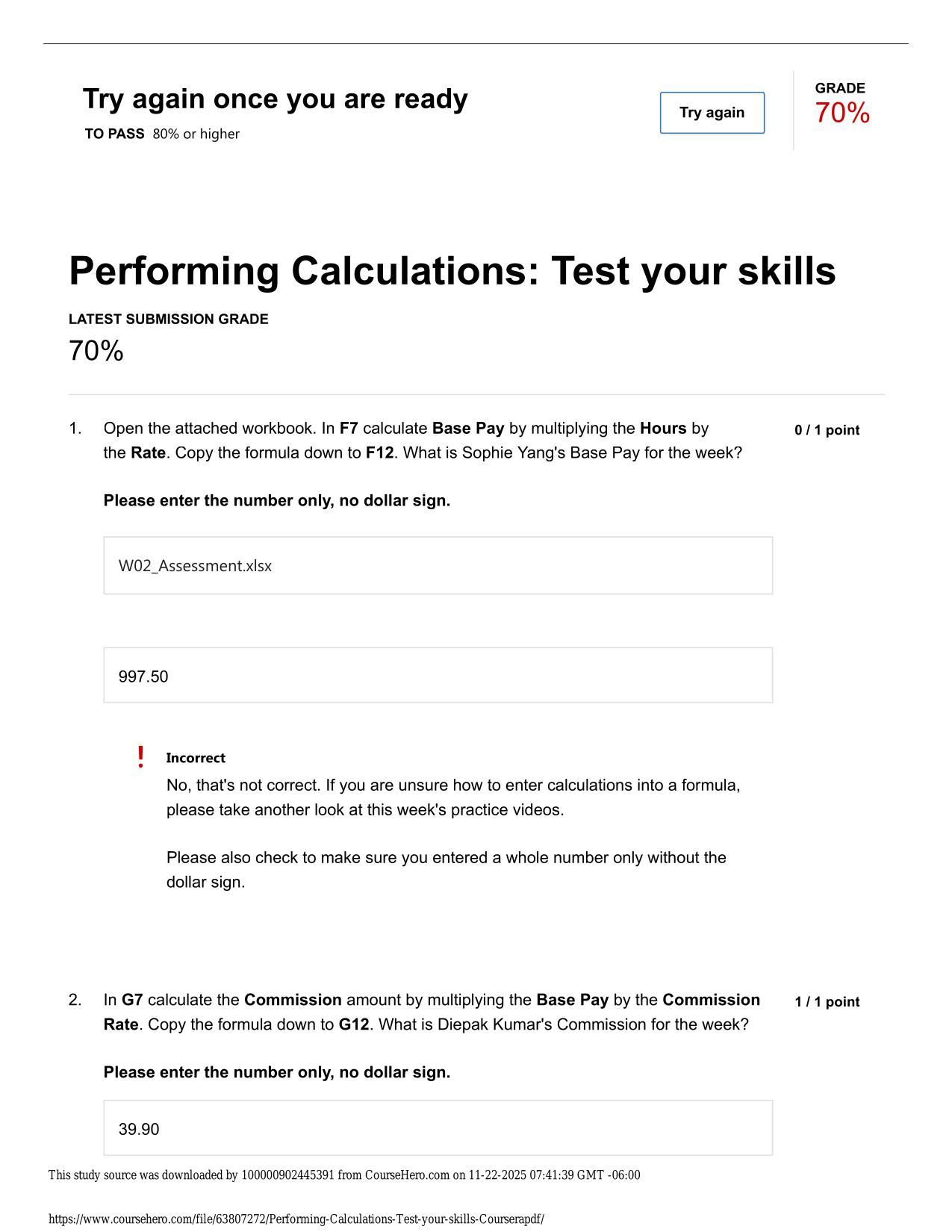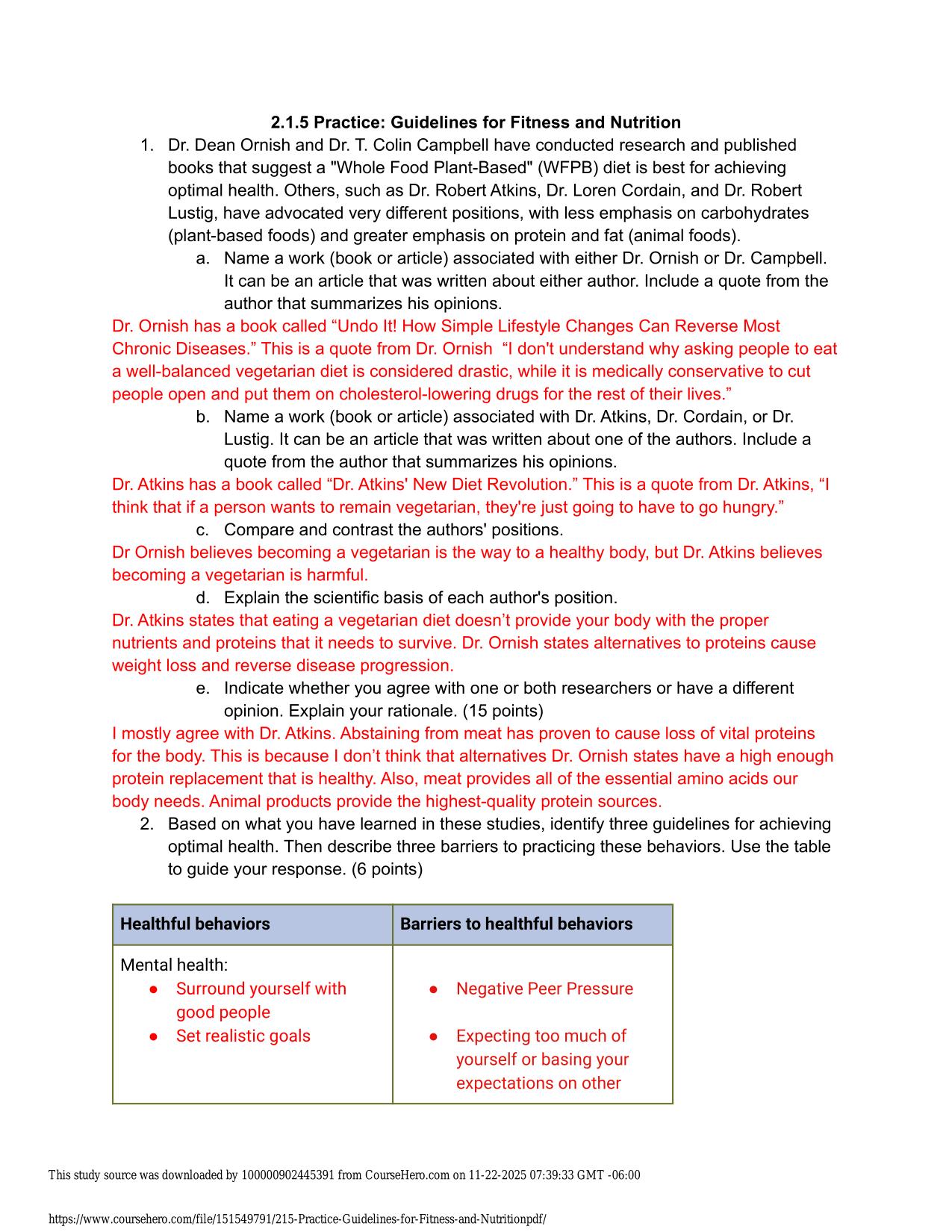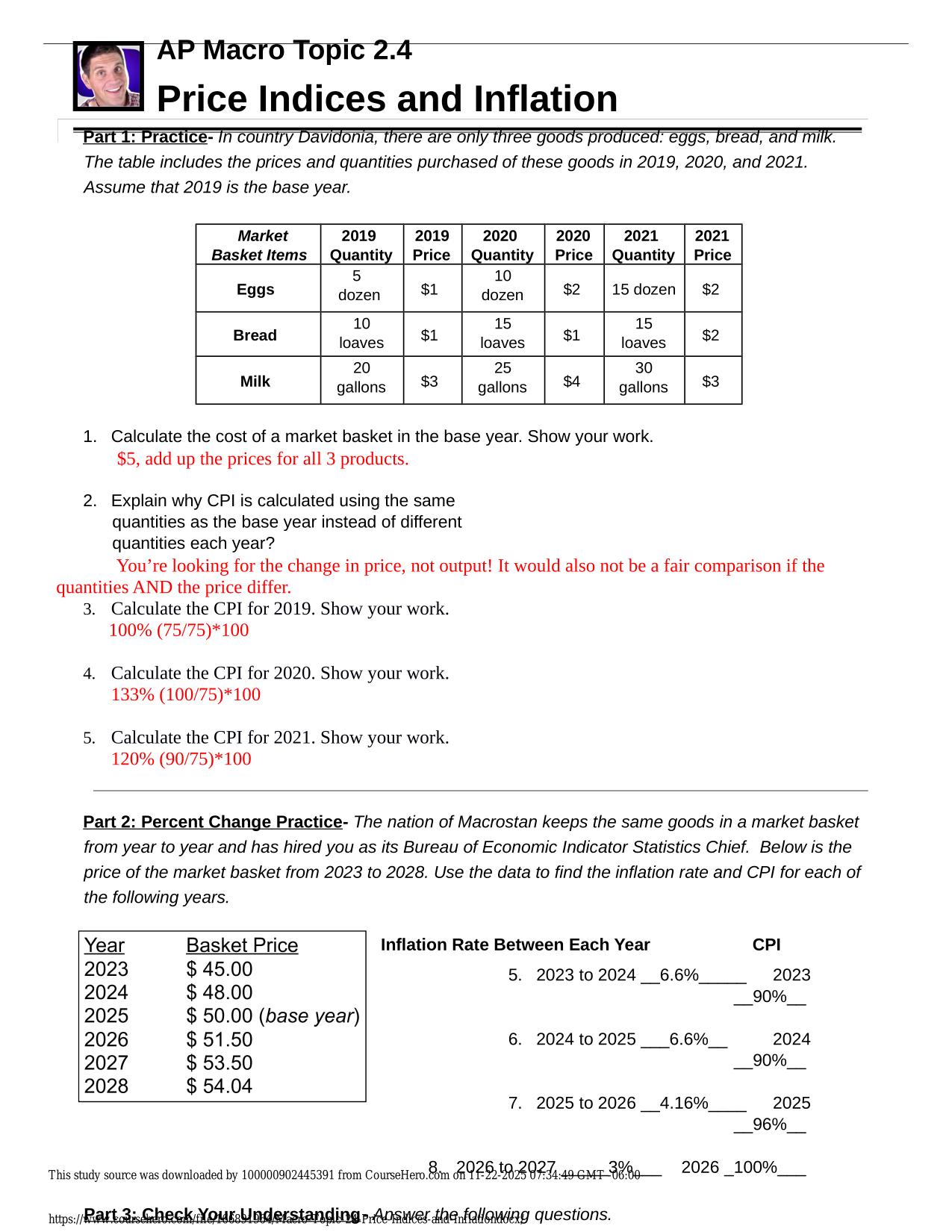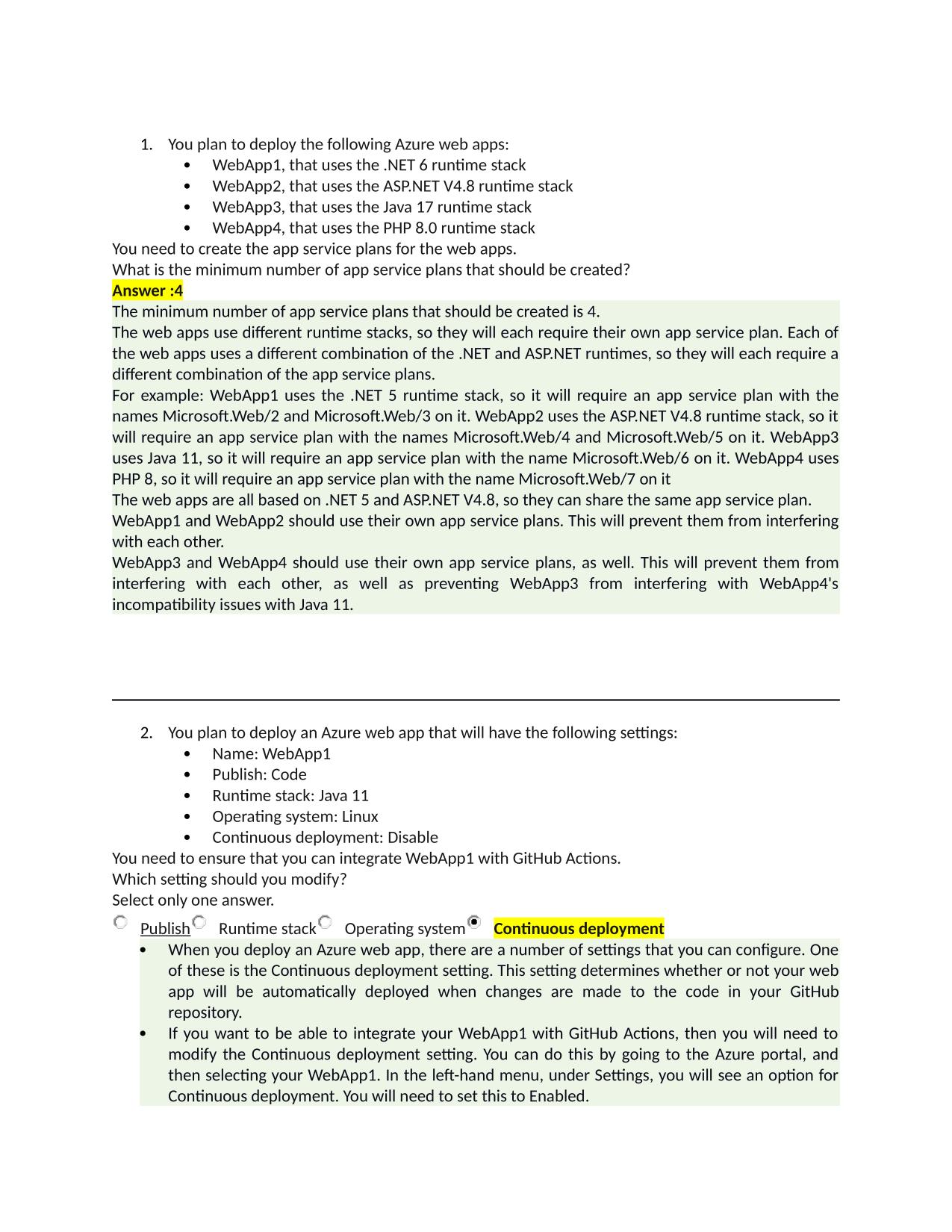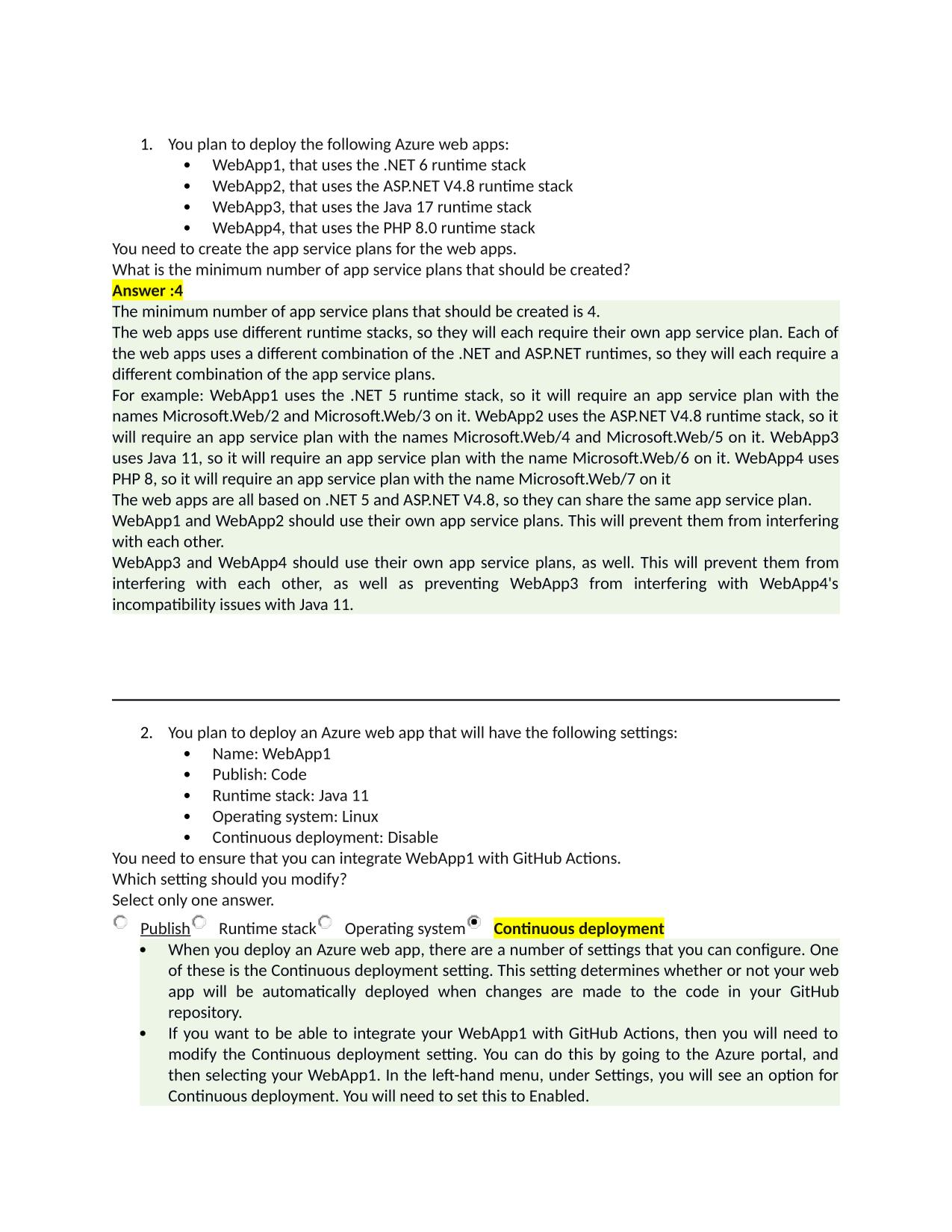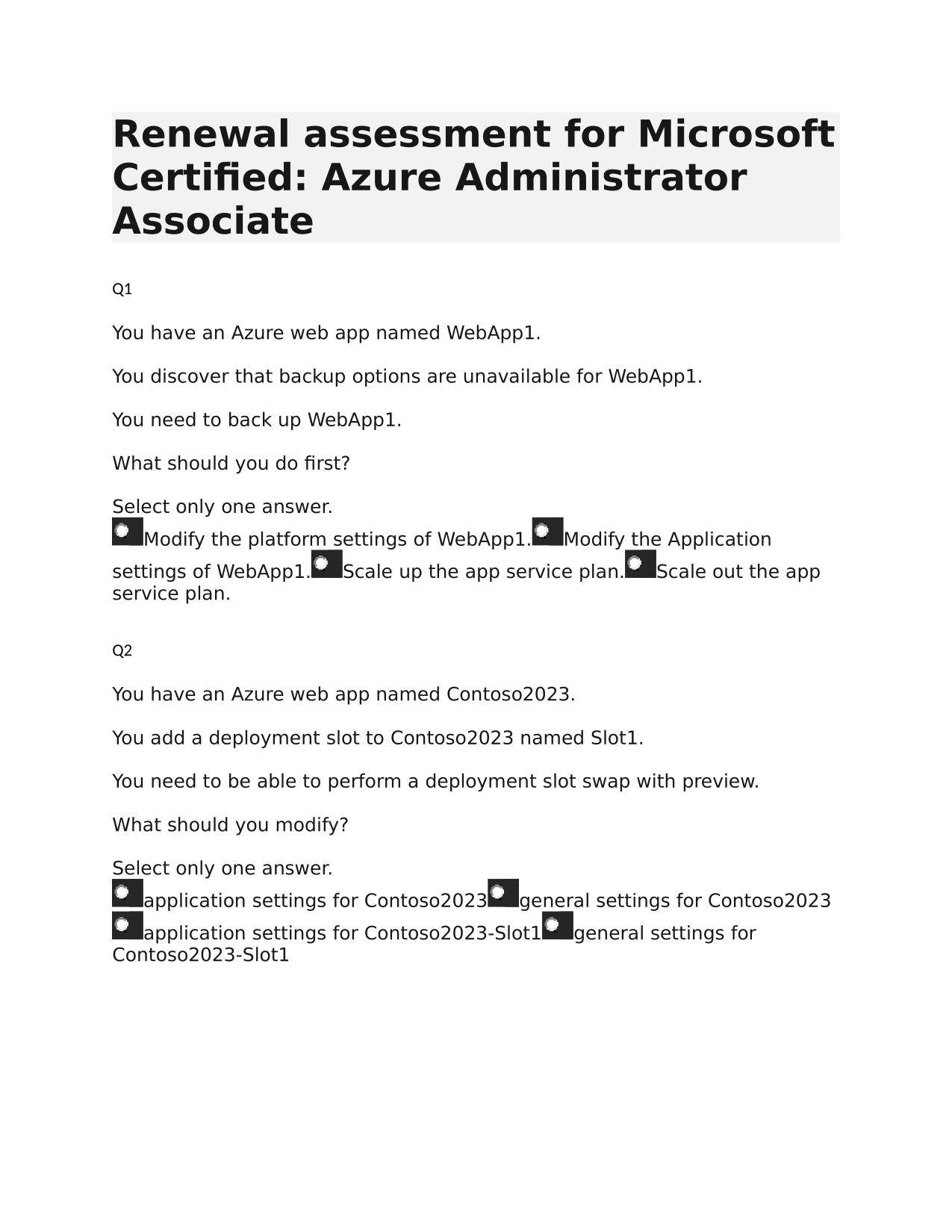2025/2026 HESI RN PEDS V2 EXAM LATEST UPDATE Q&A 100% PASS
Course:
HESI RN PEDS
Institution:
HESI RN PEDS
2025/2026 HESI RN PEDS V2 EXAM LATEST UPDATE Q&A 100% PASS A 3-month-old infant weighing 10 lb 15 oz has an axillary temperature of 98.9° F. What caloric amount does this child need? A. 400 calories/day B. 500 calories/day C.600 calories/day D. 700 c...
After purchase, you get:
✅ Instant PDF Download
✅ Verified answer explanations
✅ Refund if not Satisfied
✅ Prepared for 2025/2026 test cycle
Overview
The content mirrors authentic testing logic, helping users recognize patterns, distractors, and exam tricks. You'll start seeing the underlying structure of questions rather than just the surface content. This pattern recognition becomes almost instinctual after enough practice, making you a more productive test-taker. Many candidates find this skill helps them work more quickly while maintaining accuracy during timed conditions.
Who Is This For?
Well-suited to learners who struggle with test anxiety and benefit from predictable, exam-style practice formats. Numerous students have reported feeling calmer during actual exams after using these materials. The familiar format reduces surprises on test day.
Related Keywords
Detailed Study Description
Frequently Asked Questions
Document Information
| Uploaded on: | November 1, 2025 |
| Last updated: | November 17, 2025 |
| Number of pages: | 31 |
| Written in: | 2025/2026 |
| Type: | Exam (elaborations) |
| Contains: | Questions & Answers |
| Tags: | 2025/2026 HESI RN PEDS V2 EXAM LATEST UPDATE Q&A 100% PASS A 3-month-old infant weighing 10 lb 15 oz has an axillary temperature of 98.9° F. What caloric amount does this child need? A. 400 calories/day B. 500 calories/day C.600 calories/day D. 700 calories/day - answer>>C. Rationale: An infant requires 108 calories/kg/day. The first step is to change 10 lb 15 oz to 10.9 lb. Then convert pounds to kilograms by dividing pounds by 2.2, which is 10.9/2.2 = 4.954 kg, rounded to 5 kg. The second step is to multiply 108 calories/kg/day (108 × 5 = 540 calories/day). However, this infant requires 10% more calories because of the 1° F temperature elevation. Ten percent of 540 (calories/day) is 54, and 540 + 54 :594. This infant will require approximately 600 calories/day. Options A, B, and D are incorrect. The nurse should teach the parents of a child with a cyanotic heart defect to perform which action when a hypercyanotic spell occurs? A. Place the child's head flat, with t |
Seller Information

AdelineJean
User Reviews (0)
Exam (Elaborations)
$10.00
Add to Cart
100% satisfaction guarantee
Refund Upon dissatisfaction
Immediately available after purchase
Available in Both online and PDF
$10.00
| 0 sold
Discover More resources
Inside The Document
2024 HESI RN PEDS V2 EXAM 2024-2025 QUESTIONS AND ANSWERS 100 % PASS SOLUTION A+ GRADE A 3-month-old infant weighing 10 lb 15 oz has an axillary temperature of 98.9° F. What caloric amount does this child need? A. 400 calories/day B. 500 calories/day C.600 calories/day D. 700 calories/day - answer>>C. Rationale: An infant requires 108 calories/kg/day. The first step is to change 10 lb 15 oz to 10.9 lb. Then convert pounds to kilograms by dividing pounds by 2.2, which is 10.9/2.2 = 4.954 kg, rounded to 5 kg. The second step is to multiply 108 calories/kg/day (108 × 5 = 540 calories/day). However, this infant requires 10% more calories because of the 1° F temperature elevation. Ten percent of 540 (calories/day) is 54, and 540 + 54 :594. This infant will require approximately 600 calories/day. Options A, B, and D are incorrect. The nurse should teach the parents of a child with a cyanotic heart defect to perform which action when a hypercyanotic spell occurs? A. Place the child's head flat, with the knees on pillows above the level of the heart. B. Have the child lie on the right side, with the head elevated on one pillow. C. Allow the child to assume a knee-chest position, with the head and chest slightly elevated. D. Encourage the child to sit up at a 45-degree angle, drink cold water, and take deep breaths. - answer>>C Rationale: Assuming a knee-chest position with the head and chest slightly elevated will help restore hemodynamic equilibrium. Options A and B are incorrect positions and may hinder the child's condition. Option D may cause chest pain or a vasovagal response, with resulting hypotension. A 2-year-old child with trisomy 21 (Down syndrome) is brought to the clinic for a routine evaluation. Which assessment finding suggests the presence of a common complication often experienced by those with Down syndrome? A. Presence of a systolic murmur B. New onset of patchy alopecia C. Complaints of long bone pain D. Recent projectile vomiting - answer>>Correct Answer: A Rationale: Congenital heart disease occurs in 40% to 50% of children with trisomy 21 (Down syndrome). Defects of the atrial or ventricular septum that create systolic murmurs are the most common heart defects associated with this congenital anomaly. Options B, C, and D are not recognized as common complications of trisomy 21. The nurse is teaching an adolescent girl with scoliosis about a Milwaukee brace that her health care provider has prescribed. Which instruction should the nurse provide to this client? A. Remove the brace 1 hour each day for bathing only. B. Remove the brace only for back range-of-motion exercises C. Wear the brace against the bare skin to ensure a good fit D. Wearing the brace will cure the spinal curvature. - answer>>A Rationale: The Milwaukee brace is designed to slow the progression in spinal curvature while the adolescent is growing. The brace should be worn 23 hours a day and removed a total of 1 hour a day for hygiene. There are no specific exercises for increasing the range of motion in the back that should be performed. A T shirt should be worn next to the body and the brace put on over the T shirt to protect the skin. The brace will not cure the spinal curvature but should slow the progression of the scoliosis. Prophylactic antibiotics are prescribed for a child who has mitral valve damage. The nurse should advise the parents to give the antibiotics prior to which occurrence? A. Adjustment of orthodontic appliances or braces B. Loss of deciduous teeth (baby teeth) C. Urinary catheterization D. Insect bites - answer>>C. Rationale: Prophylactic antibiotics are usually prescribed prior to any invasive procedure for children who have valvular damage. Of the choices listed, only urinary catheterization is an invasive procedure. Options A, B, and D are not invasive and do not require administration of prophylactic antibiotics. A7-month-old male infant diagnosed with spastic cerebral palsy is seen by the nurse in the clinic. Which statement by the parent warrants immediate intervention by the nurse? A. "My son often chokes while I am feeding him." B. "Is it normal for my child's legs to cross each other?" C. "He gets stiff when I pull him up to a sitting position." D. "My 4-year-old son is jealous of his little brother." - answer>>A. Rationale: Airway obstruction is always a priority when caring for any client. Options B and C are characteristics of spastic cerebral palsy and may involve one or both sides. These children have difficulty with fine motor skills, and attempts at motion increase abnormal postures. Option D is an expected behavior and may need to be addressed, but it is not a priority over choking. Which nursing diagnosis has the highest priority when planning care for an infant with eczema? A. High risk for altered parenting related to feelings of inadequacy B. Altered comfort (pruritus) related to vesicular skin eruptions
CourseHero & Studypool Unlocks
Get Unlocked CourseHero and Studypool documents files instantly to your email, simply by pasting your link and clicking "Unlock Now". Learn more on how to unlock here.






